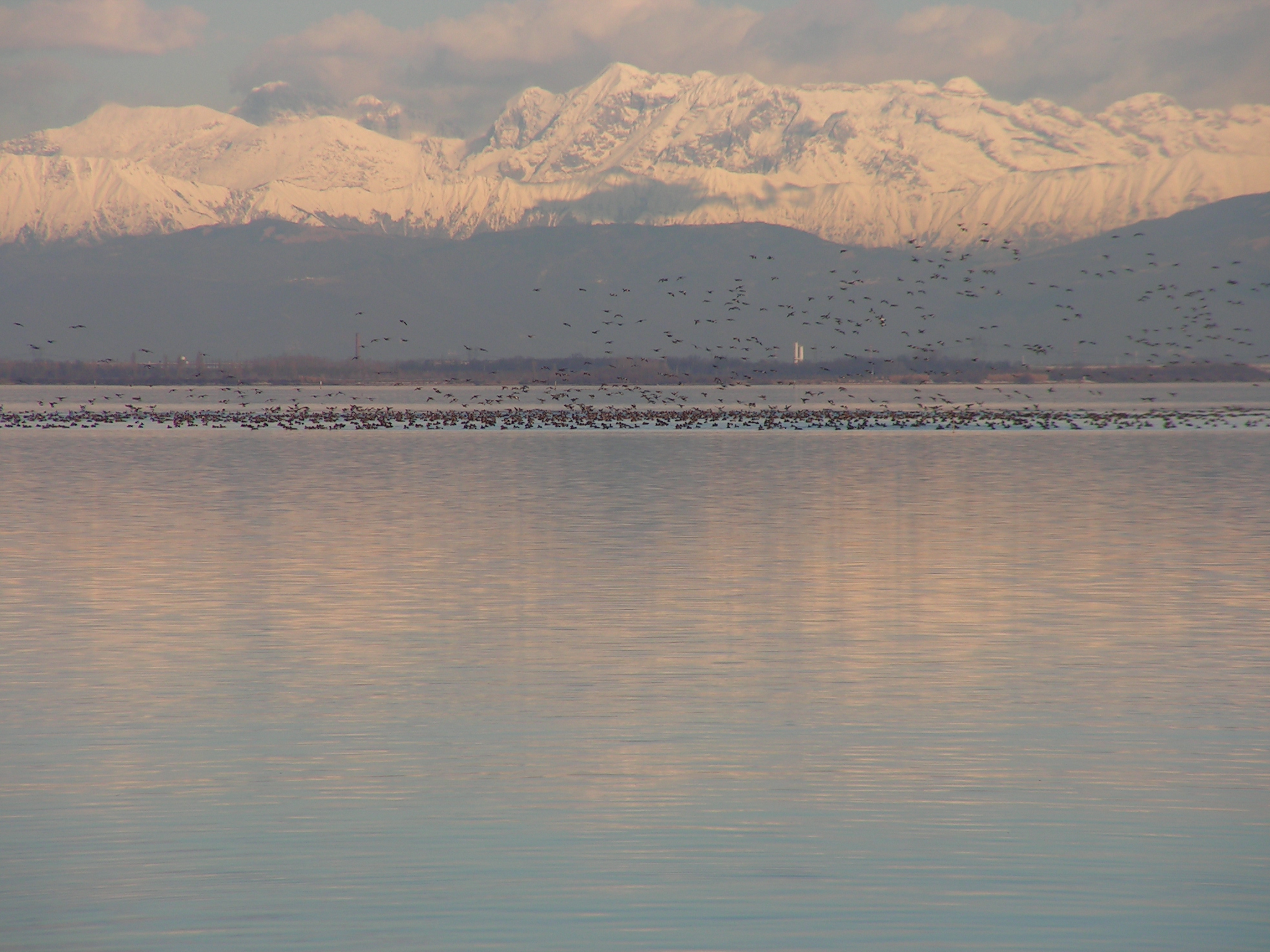Il sistema lagunare del Friuli Venezia Giulia si estende tra la foce dell’Isonzo e quella del Tagliamento. Rispetto alla “sorella maggiore”, la laguna di Venezia, si presenta meno trasformata dall’azione dell’uomo con lunghi tratti di cordone litoraneo allo stato naturale e foci fluviali in laguna circondate da ampi canneti. Le valli da pesca sono ben rappresentate in laguna di Grado, mentre la laguna di Marano è più aperta, meno salata e più profonda con ampie zone mai o raramente emergenti in bassa marea. Questi ambienti di transizione sono tipicamente dinamici con due tendenze fondamentali: in una prevale la sedimentazione e l’interramento, nell’altra l’erosione e la trasformazione in un mare poco profondo. L’uomo, soprattutto nell’ultimo secolo, ha operato per bloccare questo ambiente mutevole, delimitandolo verso terra con argini di bonifica, fissando le bocche di porto con moli guardiani, arginando tratti di cordone litoraneo e riducendo il numero delle bocche di porto, creando valli da pesca esenti da marea. Oggi la laguna è più piccola e più profonda di un tempo e la tendenze naturali, o indotte da attività antropiche dirette o indirette, portano ad una progressiva scomparsa delle zone emergenti con l’erosione dei litorali e delle barene. Chiaramente non tutti i siti presentano tendenze analoghe e in ampie zone dei litorali prevale l’interramento. Simili tendenze si sono verificate anche a Venezia in parte contrastate con la costruzione di barene artificiali. La laguna di Marano, meno trasformata di quella gradese, è oggi interessata da forti e rapide tendenze evolutive che fanno temere per zone di foce aggredite dalla forza del mare. Dal punto di vista ornitologico si tratta di uno degli ambiti più importanti a livello italiano e mediterraneo. Se consideriamo l’intero sistema delle foci e lagune dell’Adriatico settentrionale di cui la zona in oggetto costituisce la porzione nord orientale si tratta della maggiore zona umida italiana. Oltre 300 specie di uccelli sono state osservate, delle quali circa 110 nidificano, non tutte regolarmente. Tale elevatissima ricchezza verrebbe ulteriormente incrementata se considerassimo i boschi planiziali retrostanti e le risorgive da cui si originano i fiumi che poi sfociano in laguna.

